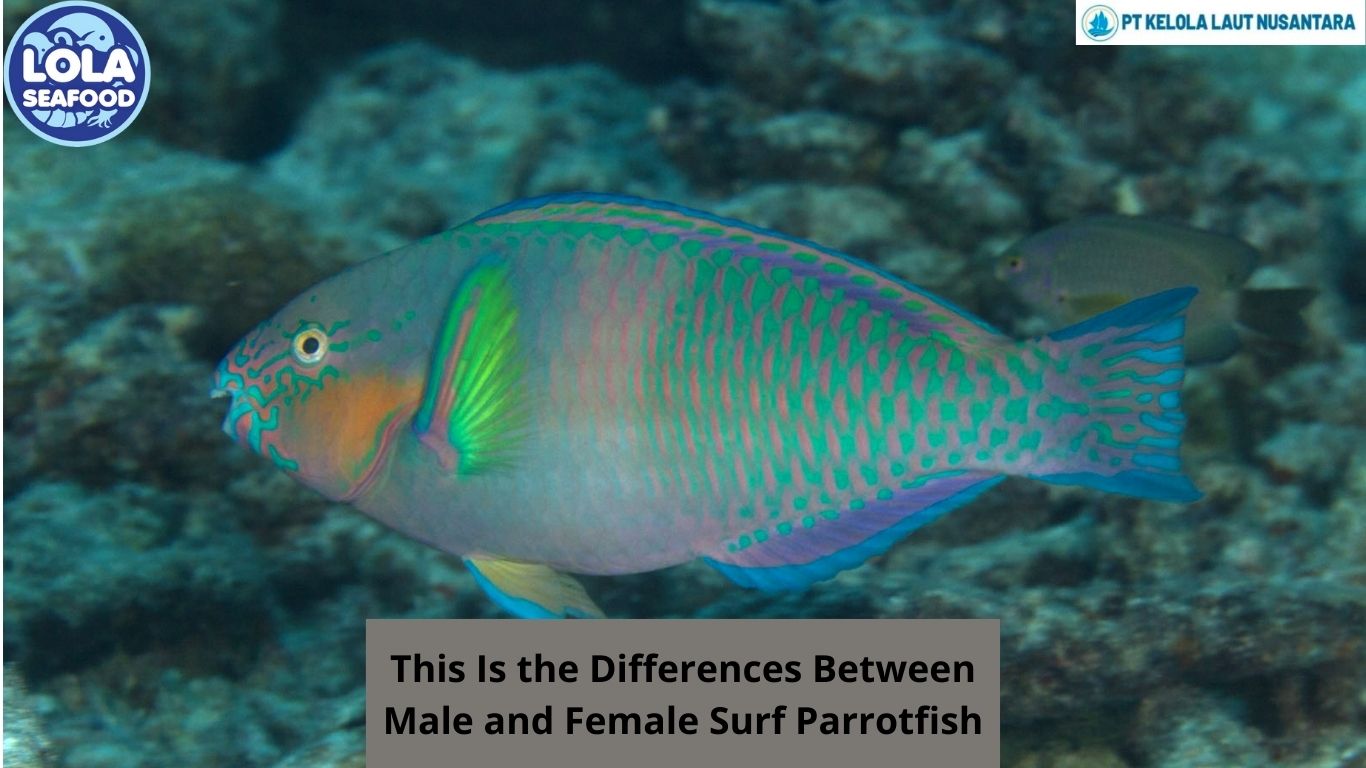This Is the Differences Between Male and Female Surf Parrotfish
By. Agung Kurniawan - 11 Feb 2025
Kelolalalut.com The surf parrotfish (Scarus rivulatus) is a fascinating marine species known for its vibrant colours and crucial role in reef ecosystems. Like many parrotfish, S. rivulatus exhibits sexual dimorphism, meaning there are distinct differences between males and females in terms of coloration, size, and behaviour. Additionally, these fish are protogynous hermaphrodites, meaning they begin life as females and can later transition to males under specific conditions. Understanding these differences provides insight into their ecology and behaviour.
Coloration Differences
One of the most striking distinctions between male and female Scarus rivulatus is their coloration. Female surf parrotfish are typically more subdued in appearance, displaying shades of brown, grey, or dull green with less vibrant patterns. This helps them blend into the reef environment, offering some protection against predators. In contrast, males, especially terminal-phase (TP) males, exhibit brilliant hues of blue, green, and yellow with intricate patterns. These vivid colours play a crucial role in attracting mates and signalling dominance within their social structure.
Size and Physical Features
Males generally grow larger than females, with terminal-phase males reaching up to 45 cm in length, while females and initial-phase (IP) males tend to be smaller. The larger size of TP males gives them an advantage in defending territories and harems. Additionally, males often develop more pronounced beak-like jaws, which they use to scrape algae from coral surfaces, a key aspect of their feeding behaviour.
Behavioural Differences
Behaviourally, males and females exhibit different social dynamics. Scarus rivulatus often live in social groups consisting of a dominant TP male and multiple females. The male aggressively defends his territory from rival males and ensures access to breeding females. In contrast, females tend to focus on foraging and maintaining social harmony within the group. If a dominant male dies or is removed, the largest female undergoes a sex change, becoming a functional male and adopting dominant behaviours.
Reproductive Strategy and Sex Change
A defining characteristic of Scarus rivulatus is its ability to change sex. All individuals start as females in the initial phase (IP), and some later transition to males if environmental and social conditions favour it. This transformation involves not only physical changes, such as increased size and coloration, but also behavioural shifts to align with the dominant male role. The sex change mechanism ensures reproductive success in environments where male numbers may be limited.
Ecological Importance
Both male and female Scarus rivulatus contribute significantly to coral reef health by grazing on algae, which helps prevent algal overgrowth and promotes coral growth. Their feeding activity plays a crucial role in maintaining reef balance, making them essential members of their ecosystems.
The differences between male and female Scarus rivulatus extend beyond just physical appearance, encompassing behaviour, size, and reproductive strategies. Their ability to change sex adds another layer of complexity to their life cycle, demonstrating the adaptability of this species. By understanding these distinctions, researchers and conservationists can better appreciate the ecological roles of surf parrotfish and implement effective measures to protect their populations.
If you are interested in our Parrotfish Fillet Skinless please do not hesitate to contact us through email and/or whatsapp.
.jpg)
The Impact of HACCP-Based Integrated Quality Management Programs on the Quality and Competitiveness of Fresh Demersal Fish Products
 and Employee Productivity on the Demersal Fish Processing Floor.jpg)


.jpg)



